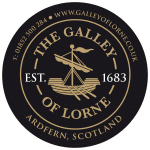
Spirits
We spent many a fine hour in the wee bar (the oldest part of the building) playing darts, pool and generally having a great time talking to the staff, locals and others staying in the area. It was such a friendly place you never really wanted to leave!
JaiOm (TripAdvisor)
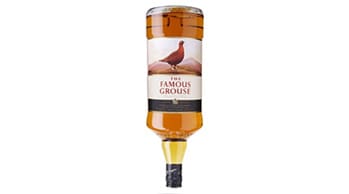
The Famous Grouse
Matthew Gloag was a grocer and wine merchant in Perth, Scotland. Gloag purchased whiskies from distilleries around Scotland, and when Queen Victoria visited Perth in 1842, he was invited to supply the wines for the royal banquet. In 1860, his son, William Gloag, took over the company and began producing blended whiskies. In 1896, William's nephew, also named Matthew after his grandfather, took over the company. He created The Grouse Brand blend in 1896, which due to its popularity, was renamed "The Famous Grouse" in 1905. Matthew Gloag's daughter Phillippa first designed the label's grouse icon.
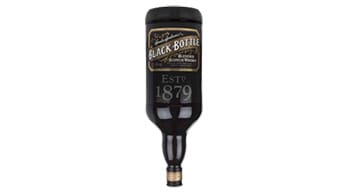
Black Bottle
Black Bottle is a blended Scotch Whisky bottled by Burn Stewart Distillers. The brand was introduced in 1879 and was first produced by Aberdeen tea blenders Charles, David and Gordon Graham. After many years of decline prompted by a distillery fire and subsequent business sale, Black Bottle was revitalised in 1990 with a new blend using Islay single malt whiskies. Black Bottle was indeed sold in a black bottle until 1914. Supplies of the black glass bottle came from Germany and had to be abandoned after the start of World War I.
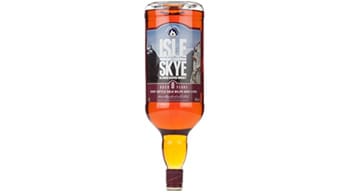
Isle of Skye
- ISLE OF SKYE Blended Scotch Whisky has its origins in that most celebrated of Scottish Islands: Skye, home of the Clan Macleod. Ian Macleod, the founder of 'ISLE OF SKYE', was justifiably proud of his family’s 19th century recipe which contains a high proportion of carefully selected Island and Speyside malts. Its smoothness, mellowness and quality are guaranteed by the fact that every whisky in the recipe has been mellowed in oak casks for at least 8 years - the recognised age of maturity for many malt whiskies.

Bells
In 1851, Arthur Bell (1825–1900) began to blend various single malts together to create a more consistent blended whisky. Bell's two sons joined the business in partnership in 1895. Arthur Kinmond (1868–1942) was appointed to manage the domestic market and Robert was appointed as head of the brand overseas. By the 1880s the company was focused on blended whisky. In 1921 the partnership became a private company run by Arthur Kinmond after Robert retired to live as a country gentleman. The end of Prohibition in America created a surge in demand, which led Arthur Bell & Sons to acquire two distilleries in 1933: Blair Athol and Dufftown. In 1936 the Inchgower distillery was also acquired.
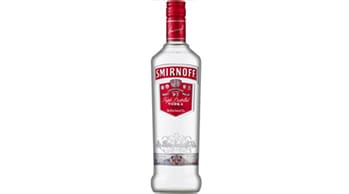
Smirnoff
Pyotr Smirnov founded his vodka distillery in Moscow in 1864 under the trading name of PA Smirnoff, pioneering charcoal filtration in the 1870s, and becoming the first to utilize newspaper ads along with charitable contributions to the clergy to stifle anti-vodka sermons, capturing two-thirds of the Moscow market by 1886. His brand was reportedly a Tsar favourite. When Pyotr died, he was succeeded by his third son Vladimir Smirnov (1875–1939). The company flourished and produced more than 4 million cases of vodka per year. In March 2006, Diageo North America claimed that Smirnoff vodka was the best-selling distilled spirit brand in the world.
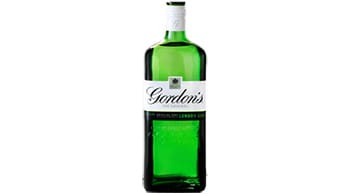
Gordon's
Gordon's London Dry Gin was developed by Alexander Gordon, a Londoner of Scottish descent. He opened a distillery in the Southwark area in 1769, later moving in 1786 to Clerkenwell. The Special London Dry Gin he developed proved successful, and its recipe remains unchanged to this day. Its popularity with the Royal Navy saw bottles of the product distributed all over the world. In 1904 the distinctive square-faced, green bottle for the home market is introduced. Gordon's has been the UK's number one gin since the late 19th century.
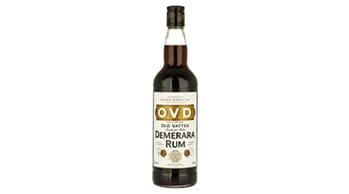
O.V.D
Scotland's No 1 Dark Rum and the best selling Demerara rum in the world, O.V.D. was originally imported from Guyana in 1838 by George Morton, a Dundee based brandy and whisky bottler and blender - since recognised as Scotland's leading rum specialist. OLD because it has been imported to Scotland since 1838 and is aged longer than most rums to obtain a mellow, rich and spicy taste. VATTED, because specially imported, top quality rums from Guyana are vatted or blended carefully to a consistent style which is smooth, rounded and full-bodied. DEMERARA, because it is made from the very best sugar cane stock and comes from the country in which the Dutch established the colony of Demerara.
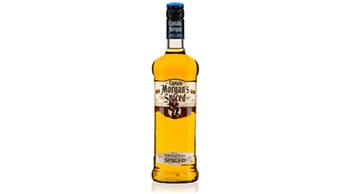
Morgan's Spiced
Captain Morgan is a brand of rum produced by alcohol conglomerate Diageo. It is named after the 17th-century Welsh privateer of the Caribbean, Sir Henry Morgan who died on 26 August 1688. Since 2011, the label has used the slogan "To Life, Love and Loot." In 1944, the Seagram Company started producing rum under the name Captain Morgan Rum Company. Seagram CEO Samuel Bronfman purchased a distillery named Long Pond from the Jamaican government. Among the buyers of raw rum from the Long Pond distillery was a Kingston pharmacy named Levy Brothers. The Levy family had been purchasing raw rum, adding medicinal herbs and spices, aging, and bottling it. Bronfman liked the rum product and bought the rights to it.
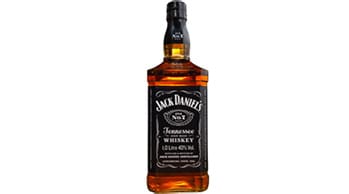
Jack Daniels
Jack Daniel's is a brand of Tennessee whiskey and the highest selling American whiskey in the world. It is produced in Lynchburg, Tennessee, by the Jack Daniel Distillery, which has been owned by the Brown-Forman Corporation since 1956. Despite being the location of a major operational distillery, Jack Daniel's home county of Moore is a dry county, so the product is not available for consumption at stores or restaurants within the county. The product meets the regulatory criteria for classification as a straight bourbon, though the company disavows this classification and markets it simply as Tennessee whiskey rather than as Tennessee bourbon.
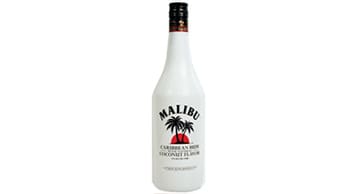
Malibu
Malibu Rum is a flavored rum-based liqueur made with natural coconut extract, possessing an alcohol content by volume of 21.0% (42 proof). The brand is owned by Pernod Ricard. The product was originally made from fruit spirits, flavored with rum and coconut flavoring in Curaçao. Originally, the product was used to simplify the making of Piña Coladas by bartenders. When the product took off, the production was then moved to Barbados where the rum is made by West Indies Rum Distillery Ltd., and the quality of the ingredients used was improved. The brand was sold by Diageo to Allied Domecq for £560m ($800m) in 2002 and later to pernod Ricard.
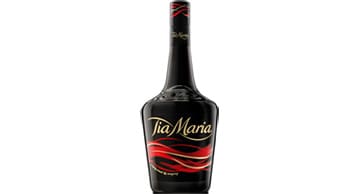
Tia Maria
Tia Maria is a dark liqueur made originally in Jamaica using Jamaican coffee beans. The main flavour ingredients are coffee beans, Jamaican rum, vanilla, and sugar, blended to an alcoholic content of 26.5%. The historical fable of its origins dates it to the 1700's. A young Spanish girl was forced to flee Jamaica, and the family plantation during a conflict. She was accompanied by a sole servant who carried a bit of jewellery and the recipe for the family liqueur. In honor of the woman's help, the girl named the liqueur "Tia Maria" (tia is Spanish for "aunt"), and her name for the woman who had helped save her life.
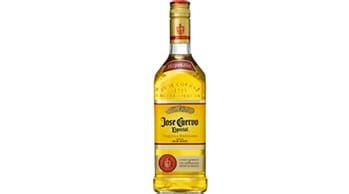
Jose Cuervo
Shortly after the Spanish conquistadors arrived in Mexico in the early 1500s, they applied their knowledge of the distillation process to pulque, an old Mexican drink made from fermented agave, to create a mezcal. This was a precursor to tequila, which is a form of mezcal. In 1758, Don Jose Antonio de Cuervo was issued a land grant by King Ferdinand VI of Spain in the town of Tequila, Jalisco. Here his family founded the Taberna de Cuervo, the farm where they would cultivate and harvest the flowering blue agave plant, a water-retaining plant found in central Mexico, that is distilled to create tequila. The first Vino Mezcal de Tequila de Jose Cuervo was made in 1795, after being granted a permit from King Carlos IV of Spain to produce tequila commercially.
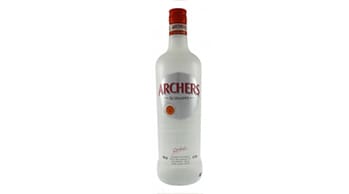
Archers
The name schnapps comes from the old Norse word ‘snappen’, meaning to snatch a gulp. From this comes the traditional way of drinking schnapps in Europe as an ice cold shot. Schnapps is a strong alcoholic drink resembling gin and in this case is flavoured with peaches. Archers is part of the Diageo brand and is the biggest selling brand of Schnapps in the UK.
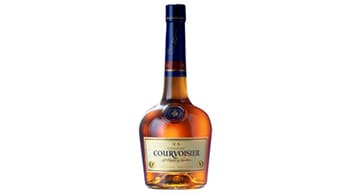
Courvoisier
Originally established in Paris, in the French suburb of Bercy in 1809, Emmanuel Courvoisier started a wine and spirit company with Louis Gallois, the then mayor of Bercy. Eventually, the two decided that the only way they could guarantee the very finest cognac was relocate to the region and become producers themselves. The 200 year old crafting process has not changed since Courvoisier’s establishment in Bercy. Legend has it that Napoleon I later took several barrels of cognac with him to St Helena, a treat much appreciated by the English officers on the ship who named it 'The Cognac of Napoleon'.
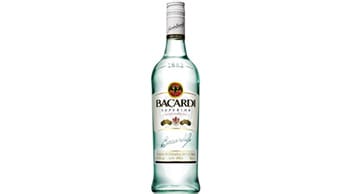
Bacardi
Facundo Bacardí Massó, a Spanish wine merchant, was born in Sitges, Catalonia, Spain, in 1814, and emigrated to Cuba in 1830. During this period, rum was cheaply made and not considered a refined drink, and rarely sold in upmarket taverns. Facundo began attempting to "tame" rum by isolating a proprietary strain of yeast still used in Bacardi production. This yeast gives Bacardi rum its flavour profile. After experimenting with several techniques he hit upon filtering the rum through charcoal, which removed impurities. In addition to this, Facundo aged the rum in white oak barrels, which had the effect of mellowing the drink. The final product was the first clear, or "white" rum in the world.
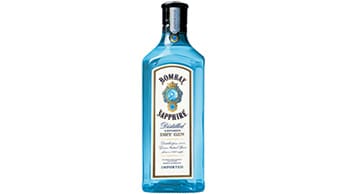
Bombay Sapphire
Bombay Sapphire is a brand of gin owned by Bacardi that was first launched in 1987 by IDV. In 1997 Diageo sold the brand to Bacardi. Its name originates from gin's popularity in India during the British Raj and the sapphire in question is the Star of Bombay on display at the Smithsonian Institution. The flavouring of the drink comes from a recipe of ten ingredients (which the bottle's label boasts as "10 exotic botanicals"): almond, lemon peel, liquorice, juniper berries, orris root, angelica, coriander, cassia, cubeb, and grains of paradise. The spirit is triple distilled using a carterhead still, and the alcohol vapours are passed through a mesh/basket containing the ten botanicals, in order to gain flavour and aroma.
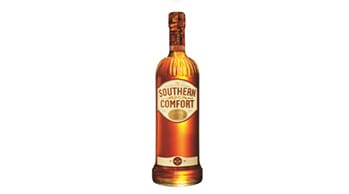
Southern Comfort
Southern Comfort was first produced by bartender Martin Wilkes Heron (1850–1920), the son of a boat-builder, in 1874 at McCauley’s Tavern in the French Quarter of New Orleans, Louisiana. According to the New Orleans Convention & Visitors Bureau, McCauley's Tavern was "just off Bourbon Street", and the original form of the drink was called "Cuffs and Buttons". Heron moved to Memphis, Tennessee in 1889, patented his creation, and began selling it in sealed bottles with the slogan "None Genuine But Mine" and "Two per customer. No Gentleman would ask for more." Southern Comfort won the gold medal at the 1904 World's Fair in St. Louis, Missouri.
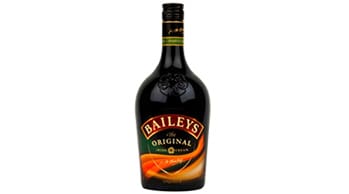
Baileys
Baileys Irish Cream was created by Gilbeys of Ireland, a division of International Distillers & Vintners, as it searched for something to introduce to the international market. The process of finding a product began in 1971 and it was introduced in 1974 as the first Irish cream on the market. The Baileys name, and the R.A. Bailey signature, were fictional, inspired by the Bailey's Hotel in London. Baileys is produced in Dublin and under contract in Newtownabbey. The alcohol and cream, together with some Irish whiskey, are homogenized to form an emulsion. This process prevents separation of the alcohol and cream during storage. The quantity of other ingredients is not known but they include herbs and sugar.


